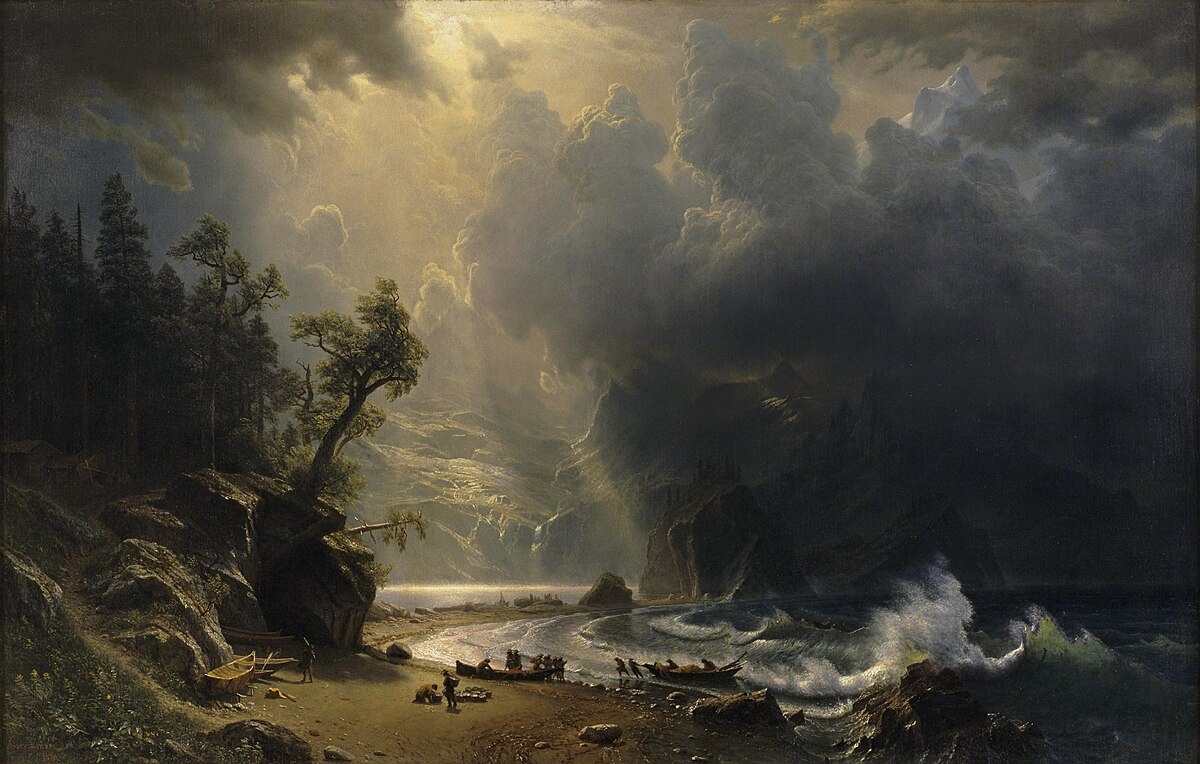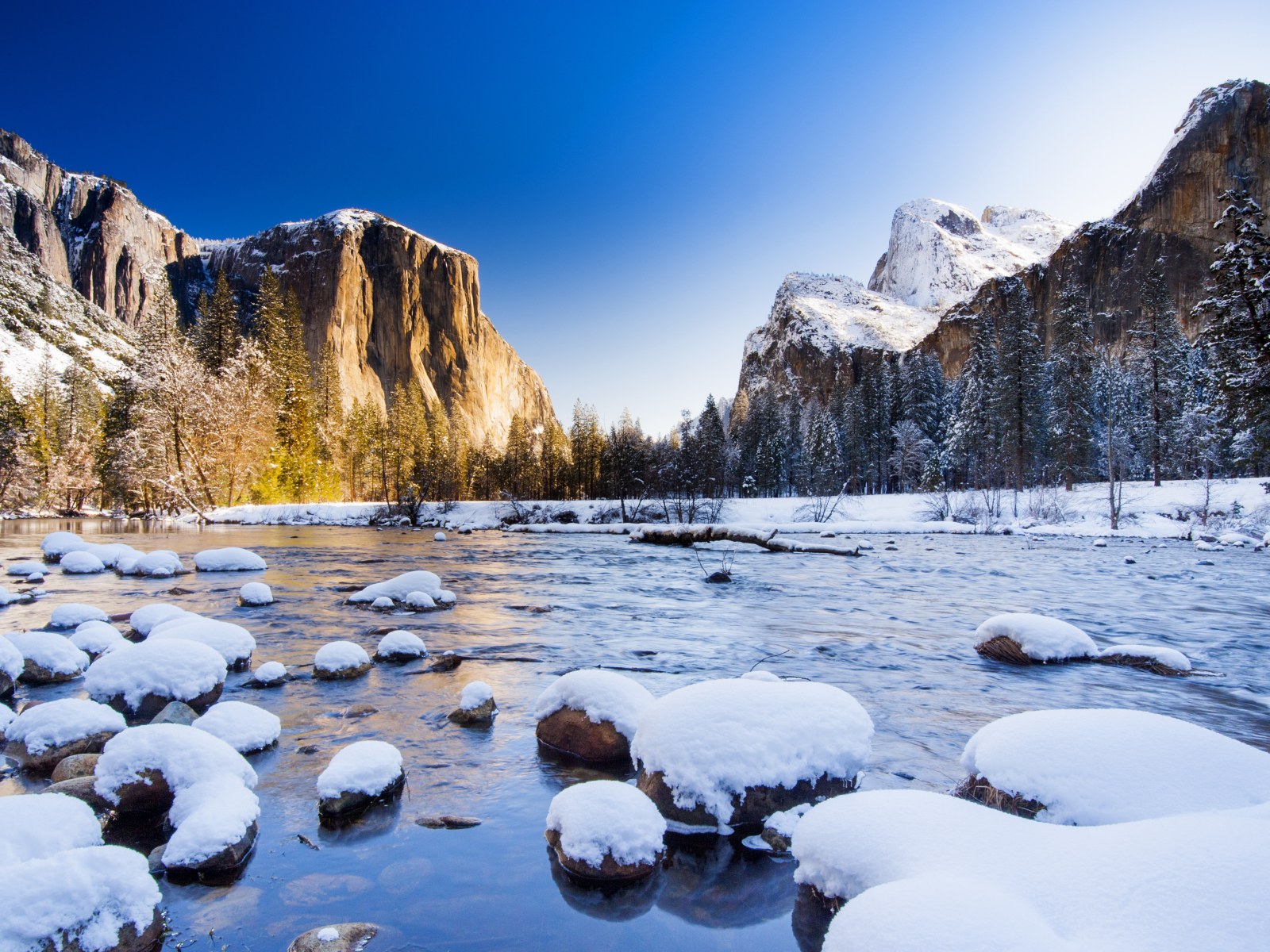How Washington State Nature Inspires: Examples of creativity and art based on the state’s natural landscapes
Washington State is a land where nature reveals its majestic beauty in a wide variety of forms. Located on the northwest coast of the United States, this state is bordered by Canada to the north and lapped by the Pacific Ocean to the west. Everything from the snow-capped peaks of the Cascade Mountains to dense forests, azure lakes and vast fields of lavender can be found here. Washington is famous for its natural attractions that fascinate and inspire not only travelers, but also local artists, poets and musicians.
Natural landscapes that inspire creativity
The state’s picturesque landscapes serve as a source of inspiration for a host of creators. The majestic mountains and green forests create an atmosphere of tranquility and harmony that is often reflected in painting and literature. For example, such natural attractions as Mount Rainier National Park or the San Juan Islands often become the main characters of artistic works.
Local artists use watercolors, oils, and other techniques to convey these magnificent landscapes. Their paintings often capture the play of light on the water and the lofty silhouettes of the mountains, capturing the breathtakingly detailed beauty. In addition, Washington’s ceramics and sculpture also draw inspiration from natural forms – rocks, trees and water streams – that resonate with art lovers around the world.
Musicians, too, find their inspiration in the state’s nature. The sounds of wind, rustling forests and the sound of water create an atmosphere that perfectly captures the melodies of local folk and indie bands as well as contemporary composers. The natural harmony of this region becomes a soundtrack for creativity, filling concert halls and galleries with melodies born in the silence of the forests and among the mountain peaks.
Here are a few notable local artists, poets and musicians who have drawn inspiration from Washington State’s natural landscapes and created works that capture the spirit of the region.
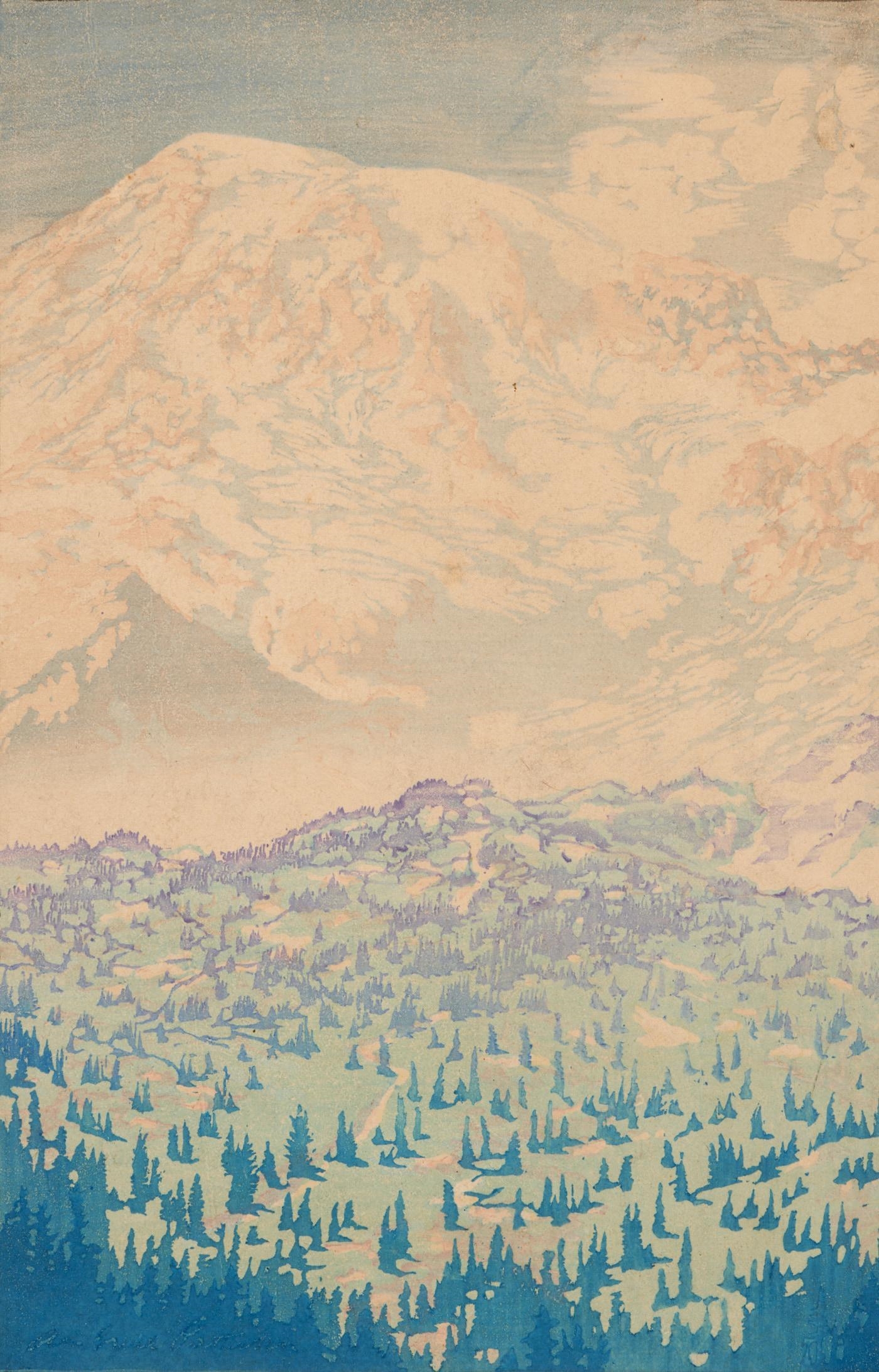
Painter
1. Aisaki Hosei
Aisaki Hosei is an artist known for his atmospheric landscapes that capture the natural beauty of the Pacific Northwest. His works depicting the Cascade Mountains and the Olympic Peninsula are mesmerizing not only for their detailed technique, but also for their depth of emotion.
Paintings depicting the Cascade Mountains
Aisaki Hosei’s work focuses on the majestic peaks and dramatic landscapes of the Cascade Mountains. Using oil painting and watercolor techniques, he conveys the contrast between the stark, craggy nature and the soft, veiled clouds that often envelop the mountain ranges. In his paintings, the Cascades appear as quiet yet powerful creatures of nature, reflecting tranquility while inspiring respect.
One of the key aspects of his work is the play of light and shadow. The sunlight breaking through the clouds and falling on the snow-capped peaks creates a sense of being at altitude and immersed in a world of silence. Hosei often depicts moments of dawn or dusk, when the light most vividly emphasizes the relief of the mountains. These works convey a quiet majesty, allowing viewers to feel connected to nature on a deep level.
Paintings of the Olympic Peninsula
Hosea’s works depicting the Olympic Peninsula stand out for their attention to detail and texture. These paintings feature dense moss-covered forests, misty morning valleys, and seascapes with distant horizons. The Olympic Peninsula with its variety of landscapes – from coasts to high mountains – is presented as a wild and pristine corner of nature, where man rarely sets foot.
In his works Hosea successfully combines the cold shades of the ocean with the green and brown colors of the forests. He pays special attention to conveying the humid atmosphere characteristic of this region, which makes his paintings almost tactile – the viewer seems to feel the freshness of the air and the coolness of the forests of Olympic. In these works, the artist seeks to show not only the beauty but also the fragility of natural ecosystems, evoking respect for the environment.
Common motifs and influences
Aisaki Hosei is inspired by the wilderness of Washington, conveying not only its visual aspects but also its emotional feelings. His work displays a deep connection to nature, which he views as a source of inspiration and strength. Through the subtle rendering of light, atmospheric conditions and natural forms, his paintings create a sense of presence, making viewers want to be among these landscapes.
Thus, his works of the Cascade Mountains and the Olympic Peninsula are powerful visual odes to nature, where each element-whether mountain, forest, or sea-represents a part of a single, majestic picture of Washington State’s natural environment.
2. Ambrose Patterson
Ambrose Patterson is a renowned artist who made a significant contribution to American modernism, drawing inspiration from the natural landscapes of the Pacific Northwest. He was particularly famous for his paintings of Mount Rainier and Puget Sound Bay. His work reflects his love for the region and captures its unique atmosphere through vivid colors and expressive forms.
Paintings depicting Mt. Rainier
Mount Rainier, a majestic peak in Washington State, was a major theme in Patterson’s work. He often depicted it as the centerpiece of the landscape, showing its different states depending on the time of day and year. In his works, the mountain appears not only as a natural object, but also as a symbol of strength and permanence.
Ambrose Patterson used bright colors and bold strokes to convey the majesty of Rainier. In his paintings, one can see the powerful contrasts between the snow-capped peaks and the rich blue sky or the green of the forests surrounding the mountain. He paid great attention to light – the sun’s rays reflecting on the snow-covered slopes give his works dynamism and depth.
Some of his famous works depict Rainier in misty conditions or at dawn, when the mountain seems almost mystical, shrouded in soft light and clouds. Patterson skillfully used subtle transitions of colors and hues to convey this play of light and shadow, creating a sense of majestic peace and harmony.
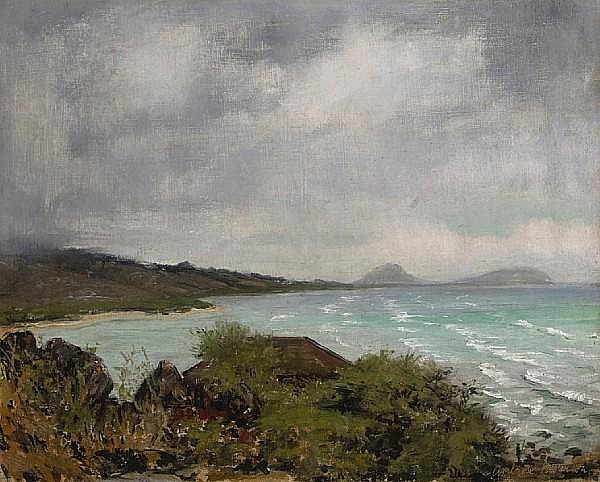
Paintings of Puget Sound
The Bay of Puget Sound, with its complex system of islands, peninsulas, and quiet bays, was also a source of inspiration for Patterson. In his work, the bay appears as a place where sky and water merge to form breathtaking seascapes.
Patterson was particularly good at conveying the tranquility of the waters of Puget Sound. He used soft colors and smooth strokes to convey the reflections of the sky and clouds on the water, creating a sense of endless expanse. In some of his works, he depicted boats moving smoothly across the surface of the water, emphasizing the peaceful and unhurried rhythm of life in the region.
His paintings also capture moments when the Bay Area experiences changes in weather conditions. For example, dark clouds or light fog can envelop the water and create dramatic contrasts between sky and land. These works often featured a softer palette and emphasized texture, conveying a sense of the moist air and cool winds characteristic of the Washington coast.
Influences on creativity and style
Patterson was a master in the use of light and color, and this is clearly evident in his depictions of Mount Rainier and Puget Sound. His work was characterized by expressive, almost impressionistic brushstrokes and rich hues that allowed him to convey the beauty and drama of these places.
His paintings didn’t just depict nature – they conveyed the emotions and atmosphere of the region. Patterson used his works to invite the viewer to experience the power of Mount Rainier or the silence of the waters of Puget Sound, making these places not just backgrounds but full-fledged “characters” in his paintings.
Thus, Ambrose Patterson’s works depicting Mount Rainier and Puget Sound are outstanding examples of how art can convey both the visual and emotional aspects of nature, inspiring people to connect with the world around them and its beauty.
3. Maya Lin
Maya Lin is an American artist and architect known for her installations that reflect a deep connection to nature and environmental forms. She draws inspiration from landscapes and natural forms, including natural phenomena in Washington State. Her work often balances art and architecture, encouraging viewers to recognize the fragility of the environment and its power.
The influence of Washington’s natural environment on Maya Lin’s work
Although Maya Lin is not originally from Washington State, she has been inspired by its natural forms and landscapes in her work. The state is known for its majestic mountain ranges, forests, and wide expanses of water. These elements, such as waves, mountains, and forests, often appear in her installations and serve as inspiration for artworks that find harmony between nature and humans.
Her focus on environmental themes can also be attributed to the influence of regions such as Washington, D.C., where conservation issues play an important role. Lin uses forms in her designs that resemble natural elements, whether it be the contours of land, water, or sky, to remind viewers of the importance of environmental protection and awareness.
The “Wave Field” project
“Wave Field” is one of Maya Lin’s most famous installations, and while it is not created specifically for Washington, D.C., its concept and form directly echo the natural elements that inspire her work. This project, created in the early 1990s, is a series of landscape sculptures reminiscent of ocean or sea waves frozen in motion.
Lin has created three versions of “Wave Field,” each a variation on the theme of natural wave forms:
- The original “Wave Field” (1995) – located on the University of Michigan campus, its rows of artificial hills resemble perfect waves. Each of the waves is a mathematically calibrated shape, and the whole installation looks like a frozen rhythm of water movement.
- “Storm King Wave Field” (2007) is a larger version located at Storm King Art Center in New York State. This installation includes nine waves up to 1.8 meters high, and it visually creates the impression of a huge, rolling ocean. In this project, Lin used natural forms and landscape as her canvas, making her work part of the environment.
- “Flutter” (2013) is another version of ‘Wave Field,’ located in Miami, which is a series of waves, up to 6 meters high, interacting with human movement and air.
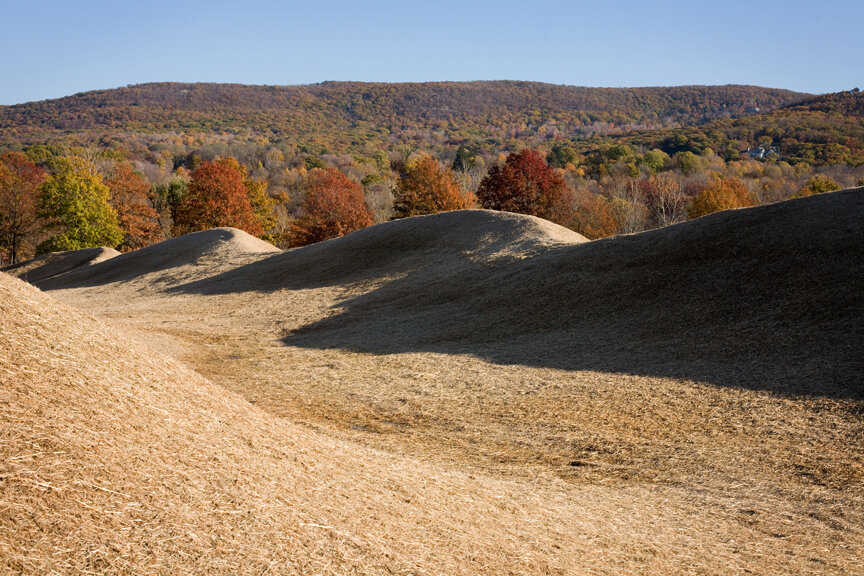
Connection to the natural landscapes of Washington State
Although the Wave Field project itself was not created directly in Washington, its wave forms and flowing, organic lines evoke associations with landscapes characteristic of the region. For example, the watery expanse of Puget Sound or the turbulent waters of the Columbia River might have been visually and conceptually close to Lin. Her emphasis on rhythmic natural forms is an ode to nature, which is particularly resonant in the context of the Pacific Northwest.
Maya Lin is also known for her installations, which often incorporate elements of water, earth, and air, exploring their interplay. In these works, one can feel the influence of the same majestic landscapes that make Washington State so unique and inspiring to artists and creators.
Environmental Emphasis
Lin strives to draw attention to the need to protect the environment. Her works, such as Wave Field, symbolize the balance of nature and technology, inviting viewers to recognize the importance of preserving natural resources. This philosophy closely resonates with the way many Washington locals and artists relate to their surroundings, which consist of forests, mountains, and oceans.
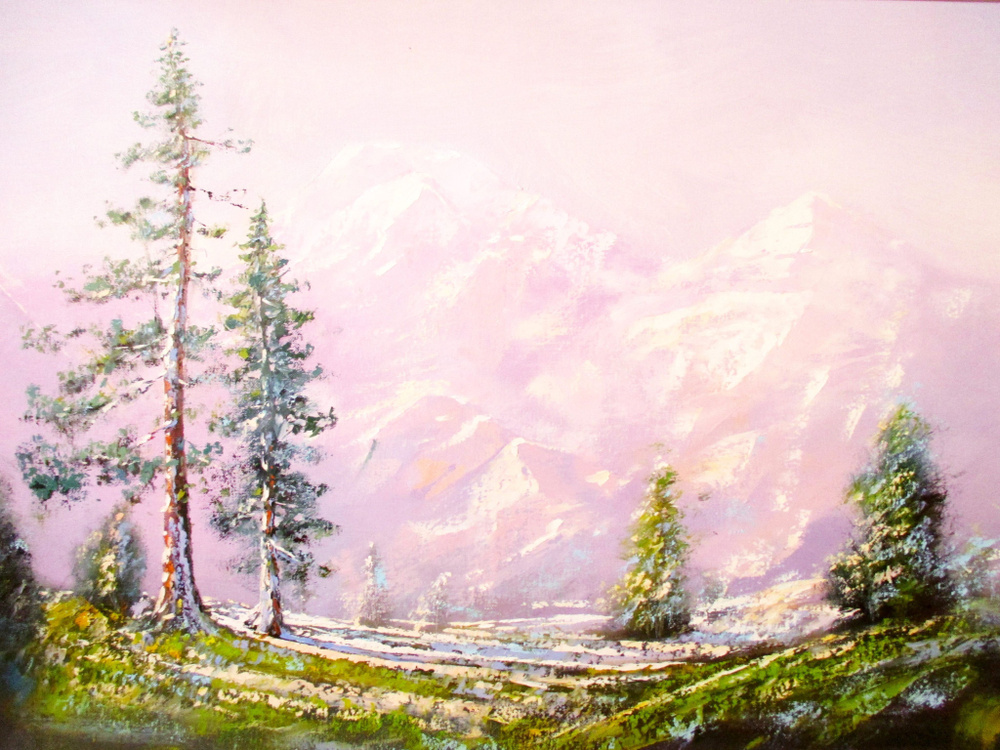
Poets
Works: Roethke, a Pulitzer Prize-winning poet, grew up in a so-called “Greenhouse” full of greenery, and his poems deeply reflect his love of nature. The poem “The Far Field” (1964) is a study of life, death, and nature that presents the nature of Washington State as a place of solitude and reflection on life.
Works: Hugo grew up in Seattle, and his poetry, such as “The Lady in Kicking Horse Reservoir,” is inspired by the nature of the Northwest, including the waters of Puget Sound, the secluded rivers and majestic mountains that play a key role in his texts.
Works:Washington’s nature has inspired Levertov’s many poems, including “Celebration” and “Living.” In these poems, she conveys a deep connection to the state’s land and forests, paying attention to the small but important details of nature.
Musicians
A Seattle-based band inspired by the natural landscapes of the Pacific Northwest, Fleet Foxes has created several albums in which images of mountains, forests, and the ocean play an important role. In their album Helplessness Blues (2011), references to the region’s wilderness, limitless spaces, and natural beauty are often heard.
-
Benjamin Gibbard (Death Cab for Cutie).
Bellingham-based band vocalist and poet Benjamin Gibbard often refers to the nature of Washington in his songs. For example, the song “Passenger Seat” and many of the band’s other tracks are imbued with images of the Northwest landscape, its rainy days and dense forests.
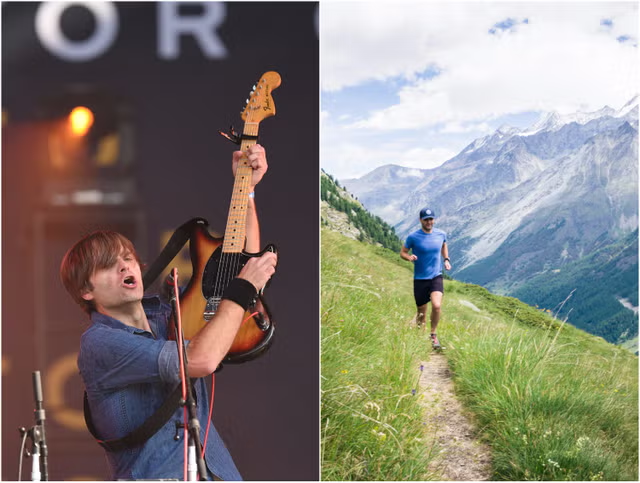
This band’s music often describes melancholy and dreamy views of the nature of the Pacific Northwest. On the album Oh, My Girl (2004), the songs echo the image of the state’s long-distance roads, forests, and nature-inspired solitude.
These artists, poets, and musicians demonstrate how diverse and layered the connection between creativity and Washington’s natural environment can be. The natural landscapes of this state inspire not only aesthetic works, but also deep reflections on life, time, and space.
Why Washington State is an attractive place to relocate
Washington is not only a place to be inspired by natural beauty, but also a great place to live. Its diverse landscapes provide a high quality of life for anyone who values outdoor activities and a connection to nature. The state offers many opportunities for hiking, skiing, kayaking and camping. Whether it’s on the ocean, in the mountains, or on a lake, there’s a place for everyone.
In addition, Washington’s natural environment promotes a healthy lifestyle and helps residents maintain a balance between work and recreation. The region’s eco-friendliness and the availability of fresh produce grown in local farms make living here even more appealing.
If you want to enjoy all of these benefits and live in one of the most beautiful parts of the United States, Washington State is the perfect choice for relocation.
We are ready to take care of all your moving needs
Moving can be a complicated process, especially if you decide to change your residence for nature and new opportunities. Our moving company is ready to help you take this important step. We’ll take care of all the worries associated with your move, so you can focus on enjoying the natural beauty and inspiring moments in your new home. No matter where exactly you decide to move to in Washington, DC – our team will ensure that your relocation process is easy and comfortable.
Washington is waiting for you – let us make your move as beautiful and carefree as the scenery of this amazing state!
Contact us in any way:
Telephone: (888) 282-6940


